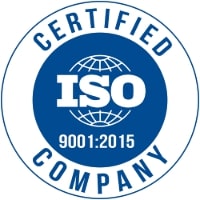TAC Approval & IMEI Registration
In the rapidly evolving mobile communications industry, Type Allocation Code (TAC) approval and IMEI registration are crucial components for ensuring device authenticity, compliance, and security. This guide covers the significance of TAC, the importance of IMEI registration, and the regulatory processes involved.

- Overview
- Definition of IMEI and its purpose
- Understanding Type Allocation Code (TAC)
- TAC Reporting and Application Process
- Variation that Require a New TAC
- What is IMEI Number
- Scope for IMEI registration
- Manufactures
- Importers
- Process
- Documents Required
- Benefits
- Fees
- Conclusion
- Frequently Asked Question (FAQ)
Introduction to TAC and IMEI
Definition and Overview of TAC: The Type Allocation Code (TAC) is an essential element in the mobile industry, representing the first eight digits of the International Mobile Equipment Identity (IMEI) number. Each mobile device requires a unique TAC to be assigned by the Global System for Mobile Communications Association (GSMA) , which ensures the device is recognized on global networks. TAC allows brand owners to differentiate between various models and manufacturing variations, facilitating global trade and device management.
Definition of IMEI and Its Purpose
The IMEI (International Mobile Equipment Identity) number is a 15-digit identifier unique to each mobile device. It is crucial for tracking, device management, and preventing theft or loss. When paired with a TAC, the IMEI offers mobile service providers and regulatory authorities a reliable tool for monitoring and regulating devices.
IMEI registration in India is the process of registering the unique International Mobile Equipment Identity (IMEI) numbers of mobile devices with the Central Equipment Identity Register (CEIR), managed by the Department of Telecommunications (DoT). This registration is essential for ensuring the traceability, authenticity, and security of mobile phones, helping to prevent theft and fraud. By maintaining a comprehensive database of all IMEI numbers, authorities can block stolen devices from accessing mobile networks and aid in their recovery. The process involves manufacturers and importers submitting detailed information and documentation to obtain certification and integrate IMEI numbers into the national registry.
Understanding Type Allocation Code (TAC)
The TAC is a unique identifier assigned to a specific mobile device model by GSMA-certified bodies. This code is vital for enabling cellular network connectivity and ensuring compliance with international standards. Every mobile device connecting to a 3GPP or 3GPP2 network needs a TAC. TAC not only ensures the authenticity of a device but also aids in global trade by allowing governments and organizations to track legitimate devices, preventing the circulation of counterfeit goods. By associating a TAC with a specific model, mobile operators can accurately serve devices on their networks and track their usage.
The GSMA, an industry body that governs global telecommunications standards, allocates TAC codes through authorized reporting bodies. Each brand owner must apply for a TAC to have their device recognized and authenticated across global networks. The GSMA ensures that these codes are distributed fairly and according to regulatory guidelines.
Key Elements of TAC Allocation
TAC Structure (8-digit format): The TAC code is the first 8 digits of the 15-digit IMEI number. The structure includes information about the manufacturer, brand, and device model. These digits are crucial for identifying each device uniquely, and they serve as the foundation for generating the complete IMEI.
TAC for Multiple Models and Variants: A single TAC is assigned to each unique device model. If there are any significant changes to the model, such as hardware upgrades or component modifications, a new TAC must be obtained.
Frequency of New TAC Allocation: A new TAC is required once a model reaches one million units. This ensures that each batch of devices remains easily identifiable by its TAC, preventing duplication and aiding in efficient tracking.
TAC Reporting and Application Process
GSMA-Approved Reporting Bodies: To maintain compliance, brand owners must apply for TAC through GSMA-authorized reporting bodies. Depending on the location of the brand's headquarters, the appropriate reporting body will manage the application. For example, TUV SUD is the reporting body for most regions, except China, where TAF handles the process.
Requirements for Brand Owners and OEMs: The brand owner holds the TAC, while the original equipment manufacturer (OEM) is named in the application. The application must specify the brand, the model, and details about the manufacturer to ensure proper allocation.
TAC Application Process Explained: The process begins with the brand owner submitting an application to the relevant reporting body. After verifying the details, including device specifications and production capacity, the TAC is allocated. Once approved, the brand owner can produce devices using the assigned TAC.
Variations That Require a New TAC
Changes in Brand, Manufacturer, or Model: If there is any change in the brand owner, OEM, or model name, a new TAC must be applied for. These changes affect the device's identity, which requires updated tracking.
Hardware Modifications: Changes in the device’s hardware, such as the motherboard, chipset, or the number of cameras, also require a new TAC. This ensures that each unique model variant has its own identifier.
Software and Operating System Changes: If a device undergoes a major change in its operating system, such as switching from Android to Tizen, a new TAC is necessary to reflect these modifications accurately.
What is an IMEI Number?
An International Mobile Equipment Identity (IMEI) number is a unique 15-digit identifier assigned to every mobile device, including 3GPP and iDEN phones, as well as some satellite phones. This number is crucial for identifying and tracking mobile phones globally. Typically, the IMEI number can be found printed inside the phone's battery compartment or displayed on-screen by entering *#06# on the dial pad. The IMEI is used for various security and network functions, including blocking stolen devices from accessing mobile networks and assisting in their recovery, thereby playing a key role in preventing mobile phone theft and fraud.
Scope for IMEI Registration
The scope for IMEI registration in India encompasses both manufacturers and importers of mobile devices, ensuring that every device entering the market is uniquely identifiable and compliant with regulatory standards.
Manufacturers
Every mobile equipment manufacturer or brand owner must register their devices with the GSMA IMEI database. This process involves obtaining an IMEI registration certificate, which verifies that their devices are assigned unique IMEI numbers that comply with international standards. This registration ensures that each device can be accurately tracked and identified, providing a layer of security and authenticity..
Importers
Importers of mobile equipment must also undergo IMEI registration to ensure that the devices they bring into the Indian market are compliant with regulatory requirements. Importers are required to log on to the online portal, submit an application form, and provide detailed information about the devices, including their technical specifications. The GSMA’s automated system, known as IMEI Cloning and Duplication Restriction (ICDR), validates the information against the global GSMA database. Once validated, a registration certificate is issued, allowing the import of mobile equipment.
Benefits of IMEI Registration
IMEI registration offers numerous advantages that enhance the security, traceability, and regulatory compliance of mobile devices. Below are some of the key benefits:
Prevention of Theft and Fraud:
Registered IMEI numbers allow mobile network operators to track and block stolen devices, significantly reducing mobile phone theft and related fraud. Law enforcement agencies can use the IMEI number to locate stolen devices, aiding in their recovery.
Device Authentication:
IMEI registration helps verify the authenticity of mobile devices, ensuring that only genuine and compliant devices are used on mobile networks. Consumers can be confident that their devices are legitimate and meet regulatory standards.
Network Security:
Registered IMEI numbers help maintain the integrity of mobile networks by preventing unauthorized devices from accessing network services. Ensures that devices comply with international and national standards, reducing the risk of network vulnerabilities.
Regulatory Compliance:
IMEI registration facilitates the legal importation of mobile devices, ensuring that all imported devices are compliant with regulatory requirements. Simplifies the customs clearance process for importers, allowing for smoother and faster processing of mobile device consignments.
Consumer Protection:
Provides transparency in the mobile device market, helping consumers make informed purchasing decisions. Protects consumers from counterfeit and non-compliant devices that may pose safety risks.
Market Integrity:
Promotes standardization across the mobile device industry, ensuring consistency in device identification and traceability. Helps maintain a level playing field for manufacturers and importers by enforcing compliance with regulatory standards.
Support for Investigative Agencies:
Assists investigative agencies in tracking criminals by monitoring IMEI numbers, helping to create a safer environment. Provides valuable data that can be used in investigations and legal proceedings related to mobile device crimes.
Facilitating Consumer Self-Registration:
Allows consumers to register their devices independently, providing them with control over their device security. In the event of loss or theft, registered IMEI numbers can be quickly reported and blocked, reducing potential misuse.
Procedure for IMEI Registration
The process for registering an International Mobile Equipment Identity (IMEI) number in India is structured to ensure that all mobile devices are uniquely identifiable and comply with regulatory standards. Here are the detailed steps involved in the IMEI registration procedure:

Step 1: Application Submission: Register on the official IMEI portal using a user ID. Fill out the form with company details and submit required documents (Certificate of Incorporation, business licenses, etc.).

Step 2: Document Inspection: Authorities review and validate the documents for compliance and authenticity.

Step 3: Model Registration: Register the mobile device models, providing technical details like the TAC, device specs, and compliance certificates.

Step 4: Attribute Registration: Register additional attributes (e.g., frequency, SIM capability) and the IMEI numbers with the quantity of devices.

Step 5: ICDR Validation: GSMA’s ICDR system checks for cloning/duplication of IMEI numbers and validates the registration.

Step 6: Certificate Issuance: an IMEI certificate for the consignment, which aids in customs clearance.
Documents Required For IMEI Registration
When applying for IMEI registration in India, manufacturers and importers need to provide a set of comprehensive documents to ensure their application is complete and meets regulatory standards. Below is a detailed list of the required documents:
Technical Specification Sheet: Details about the mobile device model.
Non-Disclosure Agreement (NDA): Signed by the director/owner, in both hard and soft copy.
Manufacturer Agreement: Rs. 100/- stamp paper agreement, notarized and signed, sent to MSAI.
Certificate of Incorporation: Proof of company registration.
Business Licenses: Required licenses for manufacturing/importing.
Proof of Manufacturing/Import Records: Documentation of facilities or past imports.
Device Test Reports: Compliance test reports and certifications.
Authorization Letter: Appointing a representative for IMEI registration.
Financial Statements: Recent financial records.
Additional Supporting Documents: Environmental, safety, or other certificates as needed.
IMEI Registration Fees
The fee structure provided below is indicative and may vary based on the specific product and BIS policies. It is advisable to check the latest fee structure on the BIS official website or contact EVTL India for complete clarification.
| No. | Type of Fees/Charges | Amount |
|---|---|---|
| 1 | Tag Purchase | 500 USD Third Party |
| 2 | TAC | 50,000 |
| 3 | Service Documentation | 20,000 - 30,000 /- As per terms & Conditions |
| 4 | Lead Time | 6 - 7 Days /- |
Conclusion:
IMEI registration in India is a crucial process managed by the Central Equipment Identity Register (CEIR) under the Department of Telecommunications (DoT) to ensure the traceability, authenticity, and security of mobile devices. By maintaining a comprehensive database of IMEI numbers, authorities can effectively block stolen devices and aid in their recovery, thus preventing theft and fraud. The process involves manufacturers and importers submitting detailed information and documentation to obtain certification and integrate IMEI numbers into the national registry.
This streamlined and cost-effective approach promotes compliance and enhances security across the mobile network. EVTL India, as a leading regulatory compliance expert, helps clients navigate this process smoothly, ensuring hassle-free compliance and contributing to a secure mobile ecosystem.























